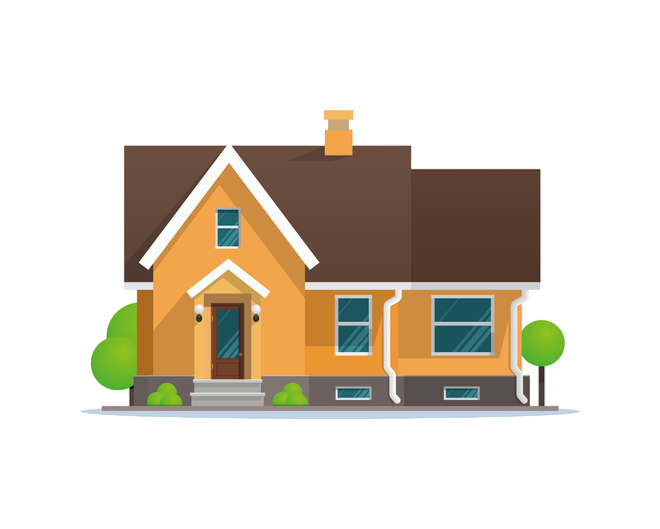This is a list of everyday things my wife and I do to save money regularly. Luckily, we are both frugal and do most of these things without discussing them much.
Almost anyone can use these tips; more importantly, they don’t force you to make radical changes to your lifestyle.
With a few minor changes, it’s effortless to use these money-saving tips:
Table of Contents
- Be a Savvy Money Manager
- 1. Make it automatic
- 2. Don’t pay banking fees!
- 3. Use rewards credit cards.
- 4. Track your spending and investments.
- 5. Buy insurance.
- 6. Avoid debt and put your money to work for you.
- Save Money Around Your Home
- 7. Examine your cable TV needs
- 8. Examine your telephone and cell phone needs
- 9. Use a programmable thermostat
- 10. Use ceiling fans, floor fans, and space heaters
- 11. Install CFLs or LEDs to save energy
- Be a Smart Consumer
- 12. Use coupons and rebates
- 13. Actively search out deals
- 14. Plan and research major purchases
- 15. Buy quality products
- 16. Buy generic where applicable
- 17. Sign up for a warehouse membership
- Bonus Tip: Use reusable shopping bags
- Save Money on Food
- 18. Use grocery store rewards cards.
- 19. Cook at home
- 20. Brown bag it, and eat leftovers
- Bonus tip: Take advantage of seasonal offers.
- Arts & Entertainment – Big Saving Opportunities!
- Take Pride in Ownership
- Be Creative!
Be a Savvy Money Manager
How you manage your money can significantly impact your bottom line.
Simple changes like making your savings automatic, using a free online checking account, keeping your savings in a high-yield savings account, and avoiding ATM fees can save you hundreds of dollars a year.
There are some options out there to make money when you sign up for an online checking account such as Chase Free Checking. More importantly, these changes are quick and easy to make and don’t cost you anything!
1. Make it automatic
Before I see my paycheck, a good portion of it is diverted to my online savings account and retirement investments. This forces me to save money automatically without taking any additional action on my part. This is important because it reduces the temptation to spend it, and reduces the barrier of having to “actively” save.
This is especially crucial when you have lots of stuff you’re saving up for because depleting your savings means you’ll have to decide what you’ll spend on and what you’ll have to forego later. Delay gratification now, and you won’t have to delay a purchase later.
Action item: Enroll in your company 401(k) plan if you have one, and make an automatic payroll contribution with each paycheck. Start small if you need to – you probably won’t even notice a big difference in your take-home pay. If you don’t have a 401(k) plan, open a Roth IRA.
2. Don’t pay banking fees!
I use my bank for automatic deposits, free bill pay, free checks, and free reimbursements for all ATM fees. I won’t pay for any of those services. (I bank with USAA, which offers all these features and more).
Here are some recommendations for other great online banks that don’t charge many fees:
- Free online checking accounts.
- Best high interest savings accounts.
- Current savings account interest rates.
Action item: Check to see how many fees your bank is charging you and how much you earn in interest. Change banks if necessary.
3. Use rewards credit cards.
If you are a responsible credit card user, you should use a cash back credit card for all your purchases. I get cash back on every purchase, and I pay the card off every month so I don’t pay any interest fees. I only recommend credit cards if you have no current credit card debt, and can afford to pay the balance every month! If you don’t want to use credit cards, then consider using a cash rewards debit card. If you are a savvy credit card user, consider saving more money by using specific credit cards based on the type of purchase.
Here are some good examples:
Action item: Use rewards credit cards or debit cards wisely and reap the rewards!
4. Track your spending and investments.
It’s essential to know where your money is going so you can manage it efficiently. We use a free money management tool to track our savings and investments and update our financial accounts when things get out of balance. This is a great way to track all your income and expenses.
Action Item: Sign up for a free online money management tool to help track your expenses. One of my favorite tools is Personal Capital.
5. Buy insurance.
Health insurance, homeowner’s insurance, auto insurance, and other types of insurance are designed to save you money! Sure, you may end up paying premiums for years and never file a claim, but if you need to file a claim, your premium will likely be small compared to what you would have had to pay. You’ll be very happy if you ever need it!
Action item: Make sure you have the appropriate insurance coverage to protect yourself and your family.
6. Avoid debt and put your money to work for you.
We have a mortgage, which we don’t mind because we would either have a mortgage or pay rent. But we are free of any student loans or consumer debt, including credit cards, automobiles, home equity line of credit, or anything else.
This means we pay very little interest and can make more of our money work for us instead of work for someone else. And that’s the whole point of saving money, isn’t it? 😉
Action item: Make getting out of debt a priority by aggressively paying it down or transferring it to a 0% balance transfer credit card so you can eliminate it more quickly.
Save Money Around Your Home
After making small changes to how you manage your money, the biggest way to save money every day is by making small changes around your home. These small changes usually don’t take much effort, but can save your hundreds of dollars a year in recurring energy costs for things like utilities and energy.
7. Examine your cable TV needs
You can save a lot of money by bundling these items with the same provider rather than purchasing them separately. But you may also find that you can do without some of these items. For example, my wife and I dropped cable TV two years ago, and haven’t looked back. We use cable TV alternatives such as over-the-air network television, streaming video, and DVDs.
Action item: Examine your needs, and don’t be afraid to cancel service if you don’t feel you are getting good value for it. You will be surprised at how easy it is to live without cable TV and other luxuries. Even cutting a premium channel or service from your cable subscription can save you hundreds of dollars a year.
8. Examine your telephone and cell phone needs
You may also find that you can do without a landline. My wife and I have used our cell phones exclusively for over six years without any problems.
I only recently had a landline installed for my business, we still use our cell phones exclusively for our personal calls. On the flip side, don’t be afraid to cancel or downgrade your cell phone plan if you don’t use it enough.
Action item: Examine your needs and drop your landline if you don’t need it. You can also downgrade or cancel your cell phone service if you aren’t using all the features. Here are some tips to save money on your cell phone bill, and how to cancel your cell phone without paying early termination fees.
9. Use a programmable thermostat
Programmable thermostats save you an estimated 10-20% on your heating and cooling bills. When we aren’t home, or we are sleeping, our house is quite a bit warmer or cooler, depending on the season. We save a substantial amount on our utilities compared to many of our neighbors!
Action item: Buy and install a programmable thermostat if you don’t have one already, and use it!
10. Use ceiling fans, floor fans, and space heaters
My wife and I program the thermostat to go to the upper-50s at night during the winter. Why so cold? Because we close the door to our room and use a space heater for heat. There is no sense in heating an entire house while we sleep. We also use ceiling fans and floor fans to assist with heating and cooling – depending on the season of course! Our computer room uses an air vent booster to increase airflow. These are easy ways to save money on heating costs.
Action item: Use space heaters, fans, extra blankets, or other means to reduce energy costs. You will be surprised how much you can save and still remain comfortable.
11. Install CFLs or LEDs to save energy
Compact fluorescent lights use about a quarter of the electricity of normal incandescent bulbs. They also need replacing much less often – often lasting five years or longer. LED lighting has become popular recently, and the bulbs use even less energy than CFLs. However, the bulbs are still costly, so see which is better for your needs.
Action item: Install CFLs or LEDs in the rooms you use most frequently. You will start seeing small savings almost immediately.
Be a Smart Consumer
The Internet has been a great equalizer for researching major purchases and saving money. But you can also save a lot of money on everyday purchases you make at your local grocery store. Here are some ways we save money on almost everything we buy:
12. Use coupons and rebates
We use coupons for oil changes, groceries, books, online purchases, and anything else we can find. Don’t waste your money on consumables that you can either reuse or avoid a purchase, like bottled water, for example, where a tumbler and any water fountain will yield the same result at an infinitely decreasing cost.
You can even find coupons on the back of receipts. Several great websites offer users cash back or rebates on virtually every online purchase (this is on top of the savings you can get with your credit card!).
Some examples include of these free online rebates companies include:
- Rakuten – You can currently get $10 just to sign up!
- Mr. Rebates
Action Item: Join Rakuten, Mr. Rebates, or similar companies and earn cash back on all online purchases when you shop through their portal. Remember, a penny saved is actually worth even more than a penny earned!
13. Actively search out deals
It never hurts to try and find a better deal or request a better deal from your service providers. For example, I saved $1,000 by making two phone calls – one to my cable TV provider a few years ago and another when I challenged my property taxes. I also actively search for other deals that can net me free money through bank sign-up bonuses and other referral offers.
Action item: Call your cable TV provider or another service provider, and ask them to lower your rates. Seek similar deals where possible.
14. Plan and research major purchases
I do a lot of research before I make a major purchase. This includes reading product reviews from places like Consumer Reports and creating a spreadsheet on Google Docs where I can compare reviews, prices, features, and other aspects of the product. Then I look for additional savings and discounts.
My wife and I recently did this to save money on a vacation. A little planning on our end saved us over $2,000. Especially on the big-ticket items, like lodging and flights, you can really scour the web and find great deals if you’re patient.
Or maybe you have other major life events, like a wedding, you want to plan for. Not every wedding needs to be a huge expense, but if it is, a solid plan can help you stray away from taking on huge chunks of credit card debt.
Action item: Be proactive when making a major purchase. Planning and research can save you hundreds, or even thousands of dollars.
15. Buy quality products
Quality items may cost more upfront but last longer, providing better results than cheaper, inferior products. Examples of higher-quality items you should buy include furniture, clothes and shoes, vehicles, and other items that will see a lot of use. I used this premise to build a professional wardrobe on a budget.
If you think you can upgrade to better quality, you can always throw your old stuff on Craigslist in order to make the new item even cheaper.
Action item: Don’t skimp on quality just to save a buck. Quality items often cost less in the long run.
16. Buy generic where applicable
Yes, I just wrote “buy quality,” but you can save a lot of money on generic items for which the brand name product is essentially the same as the store brand. Food and medicines come to mind as items where generic products are good deals.
Action item: Always consider alternatives when it makes sense (and cents!).
17. Sign up for a warehouse membership
My wife and I recently bought a Costco membership. For us, it has been well worth the $55 annual fee, but your mileage may vary. Always visit with a clear shopping list and avoid impulse purchases. If you can do this, you will almost certainly save money!
Action item: Research the warehouse membership options in your area, and consider buying a membership.
Bonus Tip: Use reusable shopping bags
Several years ago, my wife and I switched to reusable shopping bags for grocery shopping, and we both love them! They only cost about a buck, but each bag holds more groceries than a plastic bag. They don’t fall over in the trunk and will last several years. The best part is that no more plastic bags are cluttering our houses or landfills. I highly recommend these!
- Where to purchase reusable shopping bags: Check your local grocery store or discount outlet.
- Estimated cost: $1 and up

Check your VA Home Loan eligibility and get personalized rates. Answer a few questions and we'll connect you with a trusted VA lender to answer any questions you have about the VA loan program.
Save Money on Food
Food is a large expense for most families and an unavoidable one at that. But because it is an unavoidable expense doesn’t mean you need to spend too much on it. With a little planning, you can save a lot of money on your monthly food expenses.
18. Use grocery store rewards cards.
Most grocery stores (and many other stores) offer free membership cards that allow shoppers to save at least 10-15% on every trip. (I dislike the savings cards because I believe the stores mark everything up to force their customers to get the cards, but that is another story…) We still save a lot of money on groceries, so we use them.
Action item: Sign up for your grocery store card and start saving!
19. Cook at home
My wife is a great cook; we both enjoy cooking and eating at home more than we do going out. We only go out about once a month, but when we do, we prefer to make an evening out of it and go somewhere fairly nice. We prefer eating out once a month at a nice restaurant more than we enjoy eating out several times a week at chain restaurants such Chili’s or TGI Friday’s. Eating out once a month at a nice restaurant is much more affordable than eating out once or twice weekly at chain restaurants.
Action item: Consider reducing the frequency you eat out.
20. Brown bag it, and eat leftovers
I grew up eating leftovers, and I still love them (as long as they are not leftovers from when I was a kid! yuck!). I estimate I save a minimum of $20 a week by bringing my lunch to work. It is also healthier, and on the rare occasion I go out to lunch with coworkers, I enjoy it more.
Action item: Cook an extra serving or two when you make your meals and take them to work or school. Leftovers are more affordable and healthy than most restaurant options.
Bonus tip: Take advantage of seasonal offers.
Especially if you can gain special access to great deals because you’re a senior, a veteran, or even an alumni, you can take advantage of seasonal offers for a meal out, which tends to be a big-budget line item for many folks.
Arts & Entertainment – Big Saving Opportunities!
You don’t have to spend a small fortune to have a good time. Whether a family outing or paying for entertainment, there are many ways to save money. Here are some of our favorite money-saving tips for the arts and entertainment:
21. Use the library
My wife and I borrow movies from the library almost every week. New releases aren’t always available, but lately, we have been watching many classic movies from the 40s, 50s, and 60s. My wife and I also borrow our daughter’s CDs, books, and puzzles.
Action item: Join your library. Most offer free memberships and a variety of items you can borrow at no cost.
22. Visit parks
My wife and I love hiking, and our children love getting out and enjoying the weather. We have two great parks nearby that we visit often. We get great exercise, and the only cost is the gas to drive there.
Action item: Look into the free parks, nature preserves, and other free activities in your local area.
23. Manage your paid subscriptions
We don’t get newspapers or magazines since almost everything we want can be found online for free. There are other subscriptions we pay for, such as Amazon Prime, which I feel is one of the best deals for savvy consumers. Sometimes adding a paid monthly subscription can help you save money. For example, you may find that a streaming video subscription will make it easier to cancel cable TV. At around $10 per month, you could save $40 or more per month, which adds up quickly.
24. Stop receiving junk mail
You can opt-out of credit card offers and have your name and address removed from advertisers’ mailing lists (junk mail). You save time and clutter on your end, and fewer resources are used. More importantly, you reduce the pressure to spend money on purchases you don’t need and reduce the likelihood of falling for scams.
Action item: Review each paid subscription and determine if you need it, or if you can get a free or less expensive option.
Take Pride in Ownership
Pride in ownership goes a long way to helping you save money. Performing seasonal maintenance around your home, doing your home improvement projects, and doing scheduled maintenance on your vehicles and other items make them last longer and save you money.
25. Take care of things
I treat items I own with respect and take good care of them. This includes doing things such as cleaning our house, washing our cars, cleaning and maintaining computers and appliances and polishing shoes. Things last much longer when you take good care of them.
Action item: Stay on top of scheduled maintenance such as oil changes, filter changes for your car and house, etc. Clean and service items when necessary.
26. Home improvement and car repairs.
Once upon a time, I was an aircraft mechanic in the USAF, so I am fairly handy with tools. I am comfortable repairing most items around the house and always attempt to repair problems before calling a professional. However, I am not afraid to hire out anything dangerous or that I don’t have the tools or knowledge to do (usually electrical or plumbing). The same goes for car maintenance and repairs. Stay on top of maintenance like tune-ups and oil changes, and your car will run more efficiently, last longer, and cost less to maintain.
Action item: Buy a basic tool kit and learn to do basic repairs. Your home and car will last longer and you will save hundreds or thousands of dollars by doing it yourself.
27. Be a smart driver.
Many people underestimate how their driving habits affect the wear and tear on their vehicle – which can lead to shortened life spans for tires, breaks, transmissions, shocks, and other high-dollar items—taking care of your vehicle when driving reduces wear and tear and improves gas mileage. Some tips include accelerating smoothly and reasonably, coasting to a stop as often as possible, and using cruise control on the highway. My car is rated to get 26 mpg around town, and I regularly get 29.
If you want your car to practically pay for itself, give others a ride and let the sharing economy help pay for your gas and mileage along the way.
Action item: Don’t let road rage get the best of you. Plan your trips efficiently and take your time getting there. You will have a more peaceful drive and save a lot of money over time!
Be Creative!
I know some of these tips won’t apply to everyone, but they work for my wife and I. I’m sure there are many more things we can do to save money, and there are a few places where we can plug some money leaks, but overall, I think we are doing a good job. I hope these tips can help a few other people out there!



About the comments on this site:
These responses are not provided or commissioned by the bank advertiser. Responses have not been reviewed, approved or otherwise endorsed by the bank advertiser. It is not the bank advertiser’s responsibility to ensure all posts and/or questions are answered.